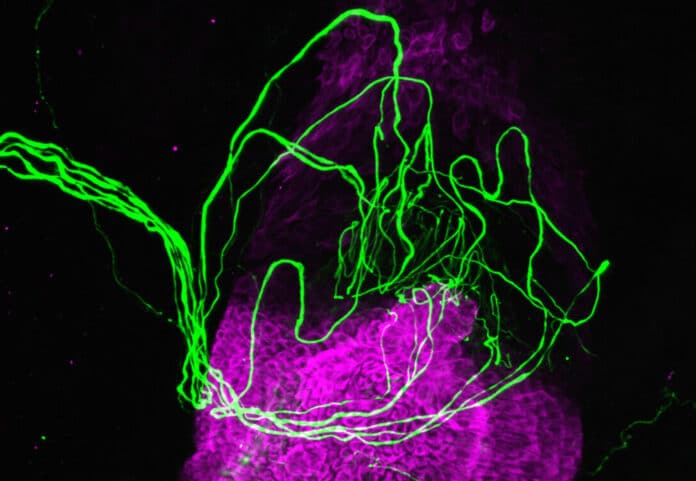Mechanoreceptors are triggered by mechanical stimuli like touching or stroking the skin, which sends signals to the brain and sensory nerve system. It is commonly known that the sensory neurons surrounding the hair follicle are directly activated when a light breeze or touch deflects the hair fiber, facilitating the transmission of mechanical information.
Imperial scientists have discovered a hidden mechanism within hair follicles that allows us to feel touch. Scientists hypothesized that hair follicle outer root sheath cells act as transducers of mechanical stimuli to sensory neurons surrounding the hair follicle.
Additionally, scientists discovered that in reaction to contact, these hair follicle cells release the neurotransmitters serotonin and histamine. These discoveries may one day aid in understanding histamine’s function in inflammatory skin conditions like eczema.
Lead author of the paper, Dr Claire Higgins, from Imperial’s Department of Bioengineering, said: “This is a surprising finding as we don’t yet know why hair follicle cells have this role in processing light touch. Since the follicle contains many sensory nerve endings, we now want to determine if the hair follicle is activating specific types of sensory nerves for an unknown but unique mechanism.”
To conduct the study, the scientists examined single-cell RNA sequencing data from human skin and hair follicles. They discovered that, in comparison to analogous skin cells, hair follicle cells had a more significant fraction of touch-sensitive receptors.
Human hair follicle cells and sensory nerves were co-cultured. When the hair follicle cells were mechanically stimulated, they discovered that this caused the nearby sensory nerves to become activated.
They then decided to look into the way that the sensory nerves were signaled by the hair follicle cells. After adapting fast-scan cyclic voltammetry to analyze cells in culture, they discovered that the touch-induced release of serotonin and histamine occurred in the hair follicle cells.
The sensory neurons stopped responding to stimulation of the hair follicle cells when the receptor for these neurotransmitters was inhibited. Similarly, they stopped sending signals to the sensory neurons when they inhibited the formation of synaptic vesicles by hair follicle cells.
They concluded that hair follicle cells release chemicals in reaction to touch, which trigger neighboring sensory neurons.
Instead of using hair follicles, the skin cells were used in identical procedures by the scientists. The cells released histamine in response to light touch but not serotonin.
Dr Higgins said: “This is interesting as histamine in the skin contributes to inflammatory skin conditions such as eczema, and it has always been presumed that immune cells called mast cells release all the histamine. Our work uncovers a new role for skin cells in releasing histamine, with potential applications for eczema research.”
Co-author of the paper, Dr Parastoo Hashemi, also from the Department of Bioengineering, is an expert in fast-scan cyclic voltammetry. She said: “Fast scan cyclic voltammetry allowed us to see the effect of touch on these cells in real-time. It’s an exciting finding as it opens up many more questions for these cells: why do they have this role, and what else can we learn about how our skin senses touch?”
Journal Reference:
- Julia Agramunt, Brenna Parke et al. Mechanical stimulation of human hair follicle outer root sheath cultures activates adjacent sensory neurons. Science Advances. DOI: 10.1126/sciadv.adh3273
